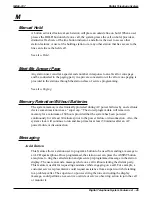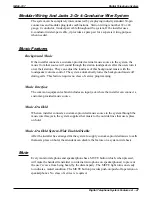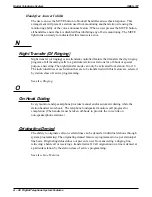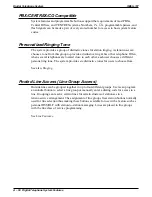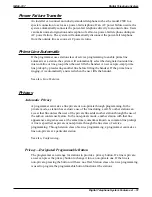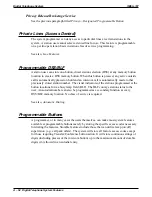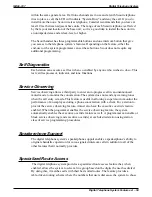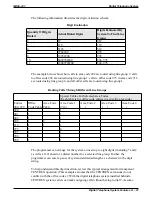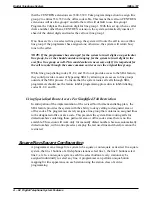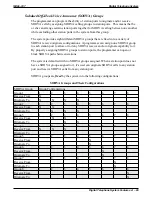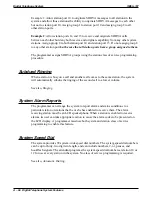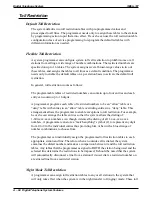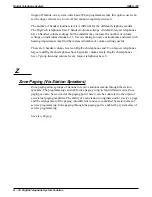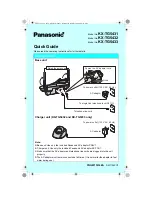
within the same general area. If all nine channels are in use and a tenth Scout telephone
tries to place a call, the LCD will indicate “System Busy” and deny the call. If you do
install more than one Scout wireless telephone, Comdial recommends that you leave at
least 10 feet between adjacent base units. The range of each Scout telephone is affected
by the layout and location of the base unit, so it is a good idea to install the base unit in
an unimpeded area and at desk-level or higher.
The Scout handset has three programmable buttons and one intercom button that give
you access to the telephone system’s features. Depending on the feature, either the
end-user or the system programmer can set these buttons. Scout does not require any
additional programming.
Self Diagnostics
Each station can execute a self test when so enabled by anyone who wishes to do so. This
test verifies processor, indicator, and tone functions.
Service Observing
Service observing allows a third party to enter an in-progress call in an unannounced
muted mode to monitor the conversation. The system does not send any warning tones
when the call entry is made. This feature is useful in allowing a supervisor to monitor the
performance of an employee during a phone conversation with a client. For a station to
provide the service observing feature, it must also have the executive override feature
enabled. When the programmer enables the service observing feature, the system
automatically enables the executive override feature as well. A programmer can enable or
block service observing (and executive override) at each desired station using station
class of service programming procedures.
Speakerphone Support
The digital telephone system’s speakerphone support enables a speakerphone’s ability to
originate handsfree operation for voice-signaled intercom calls in addition to all of the
other features that it normally provides.
Specialized Route Access
The digital telephone system provides a specialized route access feature that, when
enabled, allows the system to select a line group based on the digits the user has dialed.
By doing this, it matches calls with their best suited routes. The feature provides a
table-driven routing scheme where the numbers that users dial cause the system to chose
IMI66–107
Digital Telephone System
Digital Telephone System Features A – 59
Summary of Contents for Air Impact DSU
Page 2: ...Printed in U S A GCA47 157 ...
Page 30: ......
Page 112: ......
Page 192: ...Digital Telephone System IMI66 107 3 80 System Programming ...
Page 283: ......
Page 284: ......
Page 285: ......
Page 286: ......
Page 287: ......
Page 288: ......
Page 289: ......
Page 290: ......
Page 291: ......
Page 292: ......
Page 293: ......
Page 294: ......
Page 295: ......
Page 296: ......
Page 297: ......
Page 298: ......
Page 299: ......
Page 300: ......
Page 301: ......
Page 302: ......
Page 303: ......
Page 304: ......
Page 305: ......
Page 306: ......
Page 307: ......
Page 308: ......
Page 309: ......
Page 310: ......
Page 311: ......
Page 312: ......
Page 313: ......
Page 314: ......
Page 315: ......
Page 316: ......
Page 317: ......
Page 318: ......
Page 319: ......
Page 320: ......
Page 321: ......
Page 322: ......
Page 323: ......
Page 324: ......
Page 325: ......
Page 326: ......
Page 327: ......
Page 328: ......
Page 329: ......
Page 330: ......
Page 331: ......
Page 332: ......
Page 333: ......
Page 334: ......
Page 335: ......
Page 336: ......
Page 337: ......
Page 338: ......
Page 339: ......
Page 340: ......
Page 431: ......
Page 436: ......
Page 437: ......
Page 438: ......

